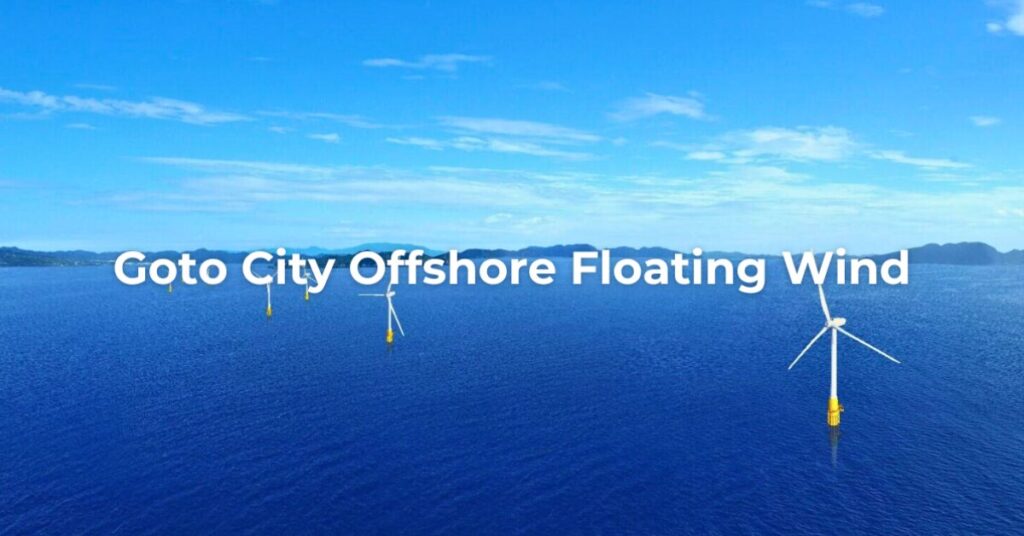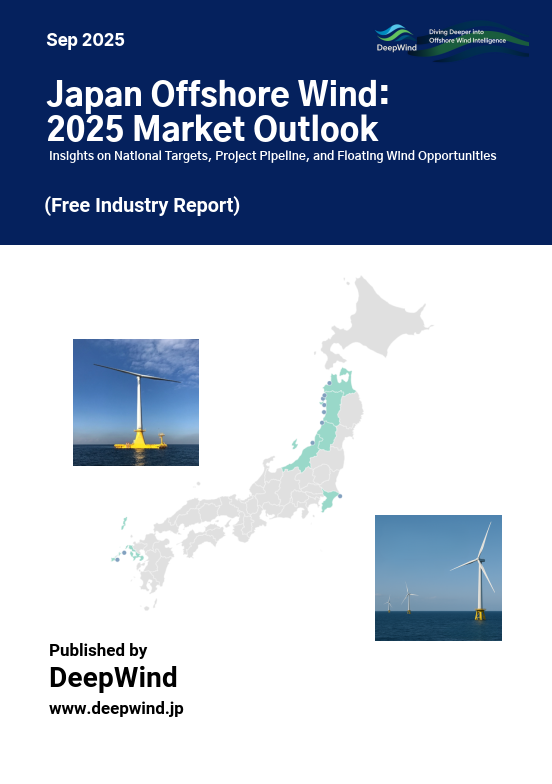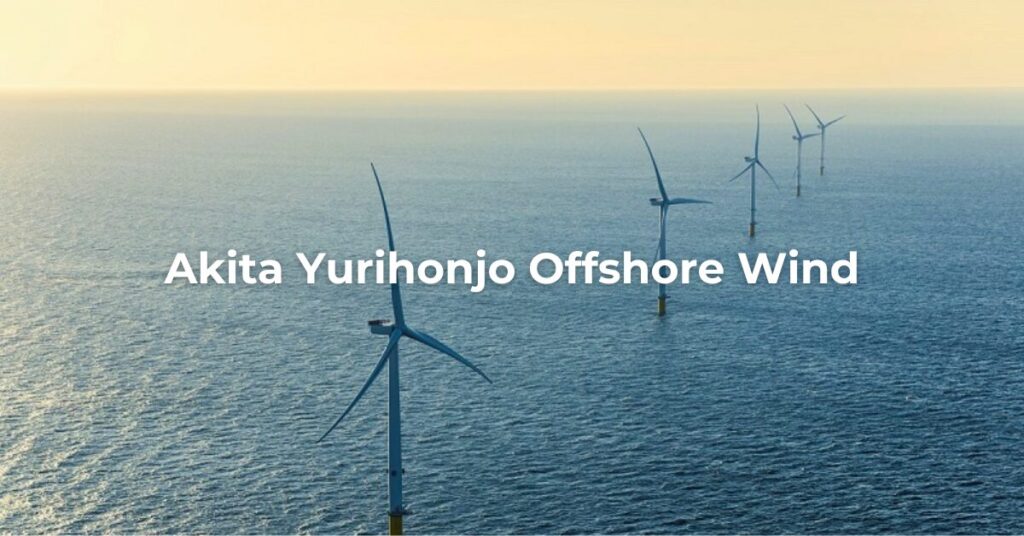Introduction
This article introduces the designated Promotion Area of Nagasaki Goto city offshore under Japan’s Offshore Renewable Energy Act.
We explore the site’s characteristics, estimated power capacity, potential platform types, and development outlook.
➡ For an overview of all ten Promotion Areas as of 2025, see:
Promotion Areas for Offshore Wind in Japan – 2025 Overview
1. Project Overview
| Project name | Goto City Offshore Floating Wind Power Project |
| Developer | Goto Floating Wind Farm LLC |
| Stakeholders | Toda Corporation, ENEOS, Osaka Gas, INPEX, Kansai Electric Power, Chubu Electric Power |
| Location | Offshore Goto City, Nagasaki Prefecture |
| Type | Floating Offshore Wind Power (Hybrid Spar-Type, Three-Point Mooring System) |
| WTG | Hitachi |
| Price | 36 JPY/kWh |
| Capacity | 16.8 MW (2.1 MW × 8 turbines) |
| Start of Construction | July 2020 |
| COD | January 2026 – december 2043 |
1-1. Notes: Change in COD
According to Toda Corporation, COD of this project was originally scheduled for January 2024, but due to delays in the construction process caused by defects found in the floating structure during construction, an application was submitted to change the public occupancy plan to change the COD to January 2026, and was approved by METI on September 22, 2023.
2. Location
2-1. Sea & Geographical Features
Located about 7 to 11 km off the coast of Sakiyama on Fukue Island in the Goto Islands, in an area with a depth of 120 to 135 m. This is Japan’s first commercial-scale floating project, and was designed to accommodate sea conditions in the path of a typhoon.
2-2. Port Infrastructure & Grid Connection
A construction yard was set up in Fukue Port, and the floating structure was constructed and launched. A submarine cable was planned to connect Goto to the Kyushu mainland power grid. Specialized construction materials for the installation of floating structures, such as large crane ships, were used.
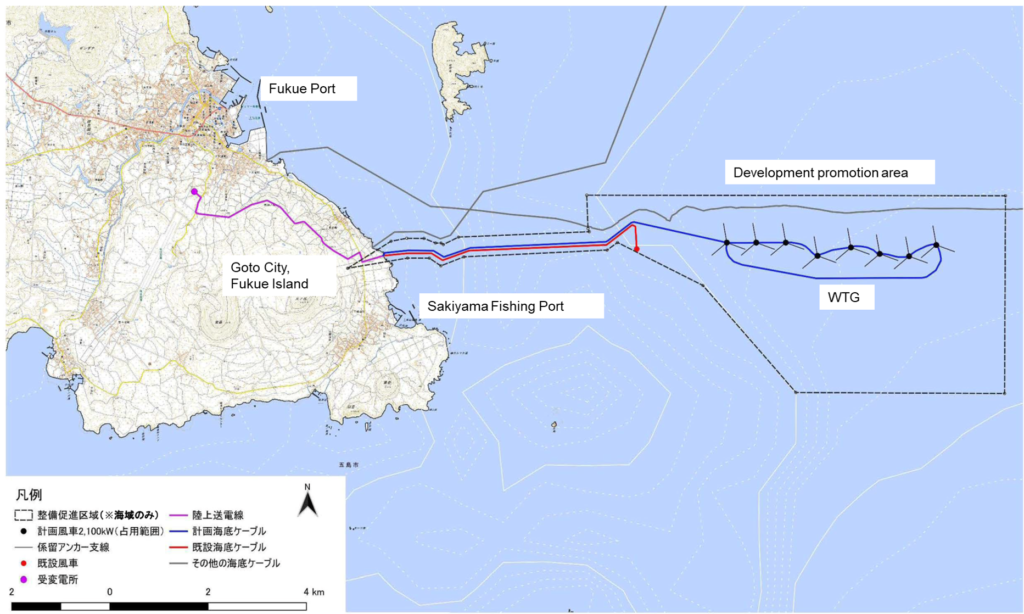
3. Overview of Wind Power Facilities

4. Project Timeline
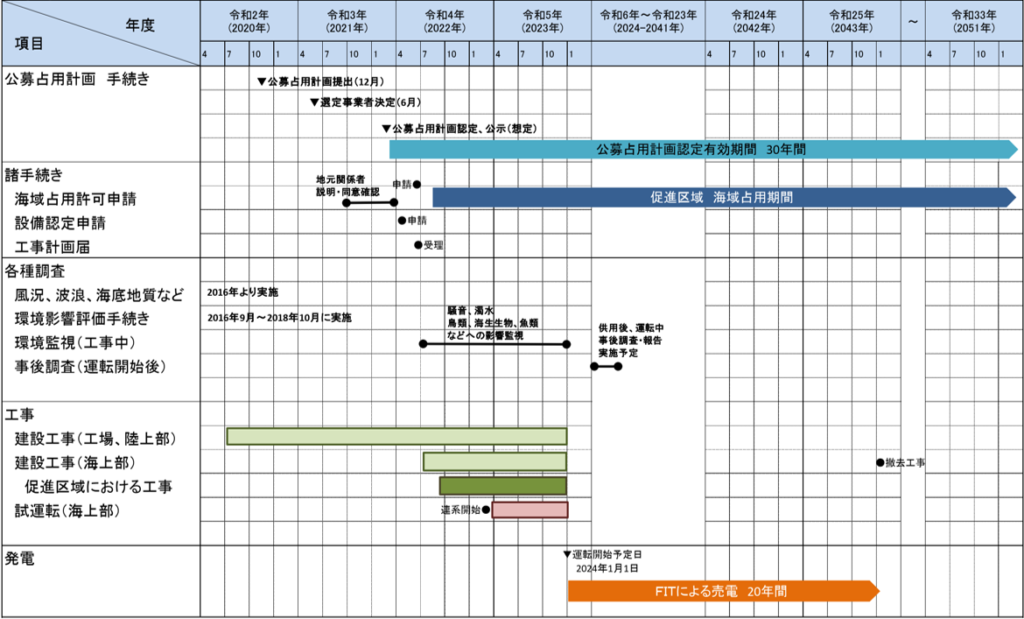
Development Phase (2016–2022)
- Environmental impact assessments, wind conditions, wave, and seabed geological surveys
- FIT approval and permitting processes
- Local stakeholder briefings and consensus-building
- June 2021: Project operator selected
- June 2022: Construction plan submitted
Construction Phase (2020–2025)
- July 2020: Onshore construction commenced
- July 2022: Offshore construction commenced
- 2025: Wind turbine assembly and installation scheduled
Operation & Maintenance Phase (2026–2043)
- Wind turbines: Regular inspections and repairs through remote monitoring and on-site checks
- Floaters: Inspections of the platform structure, mooring system, and anchors
Turbine Decommissioning & Reuse Phase (2043–2051)
- January 2043: Decommissioning work begins
- 2051: Occupancy period of the promotion zone ends
EIA status
| Prefecture | Project name | Developer | EIA Stage | Project Scale | Last updated |
|---|---|---|---|---|---|
| Nagasaki | (Tentative name) Goto City Offshore Wind Power Project | Toda Corporation | Environmental Impact Statement | Up to 22 MW (eight 2.1 MW turbines and one 5.2 MW turbine) | Jul 7, 2025 |
5. CAPEX, OPEX, LCOE and IRR Estimation
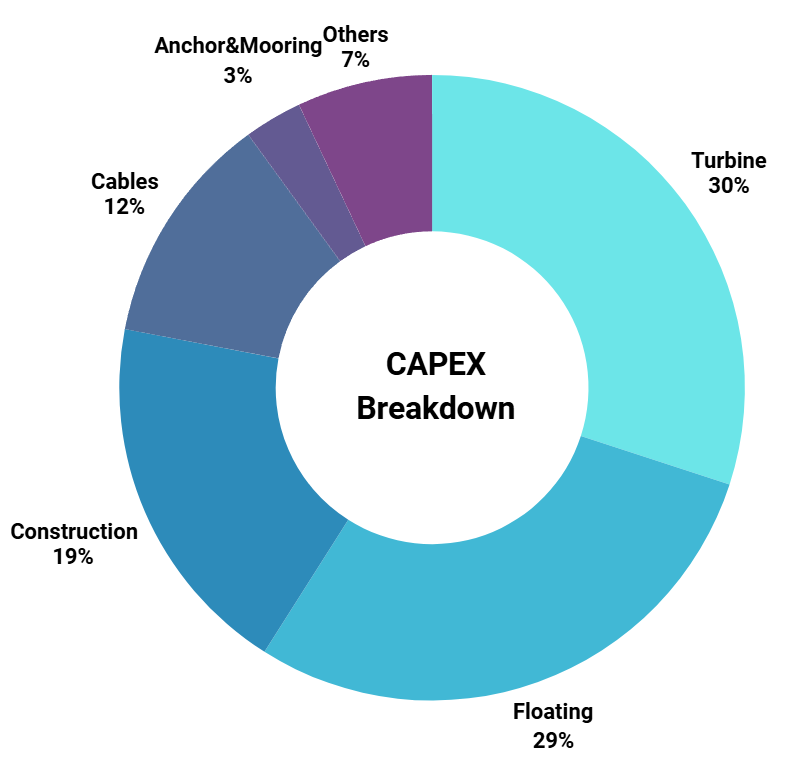
Evaluating the profitability of offshore wind projects requires close attention to cost-related indicators such as CAPEX, OPEX, LCOE, and IRR. However, in Japan’s designated Promotion Zones, publicly available cost data remain scarce, leaving investors and developers with limited information for decision-making.
To address this, we estimated CAPEX, OPEX, LCOE, and IRR using the NEDO cost model, based on representative site conditions including distance to shore, water depth, and distance to port.
👉 Read the full article here
6. Key Features of the Project
6-1. Innovative Technology
The hybrid spar-type floating platform used in this project is uniquely designed to withstand deep waters and typhoon-prone regions. Each turbine, with a capacity of 2,100 kW, incorporates cutting-edge engineering to maximize efficiency and durability.
6-2. Construction Plan
- Manufacturing:
Steel components are constructed in Nagasaki Prefecture’s shipyards, leveraging local expertise in maritime engineering.
Concrete float components are fabricated locally to boost cost efficiency and involve regional construction firms. - Assembly and Installation:
Components are assembled at the Fukue Port in Goto City before being transported to designated offshore sites for installation.
6-3. Economic and Regional Impact
The project actively contributes to the local economy through:
- Procurement of construction materials and services from regional businesses.
- Employment opportunities during construction and operation phases.
- Strengthening local supply chains and maritime infrastructure.
6-4. Environmental and Social Harmony
This project includes measures to monitor and mitigate environmental impacts, such as:
- Ongoing assessments of marine ecosystems, including fish populations and seabird activities.
- Collaborative efforts with local fishermen and stakeholders to ensure coexistence with existing marine activities.
Conclusion
The Goto City Offshore Floating Wind Farm is part of Japan’s broader strategy to achieve carbon neutrality by 2050. By setting a benchmark in floating offshore wind technology, the project aims to attract further investments and inspire similar developments in other regions. Through technological advancements, local collaborations, and environmental stewardship, the project paves the way for a sustainable and energy-independent future.
To explore how this area compares nationally and understand Japan’s offshore wind roadmap, visit:
Promotion Areas for Offshore Wind in Japan – 2025 Overview —
your guide to Japan’s offshore wind Promotion Areas.
Explore more categories at DeepWind:
- 🔍Market Insights – Understand the latest trends and key topics in Japan’s offshore wind market
- 🏛️Policy & Regulations – Explore Japan’s legal frameworks, auction systems, and designated promotion zones.
- 🌊Projects – Get an overview of offshore wind projects across Japan’s coastal regions.
- 🛠️Technology & Innovation – Discover the latest technologies and innovations shaping Japan’s offshore wind sector.
- 💡Cost Analysis – Dive into Japan-specific LCOE insights and offshore wind cost structures.
